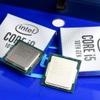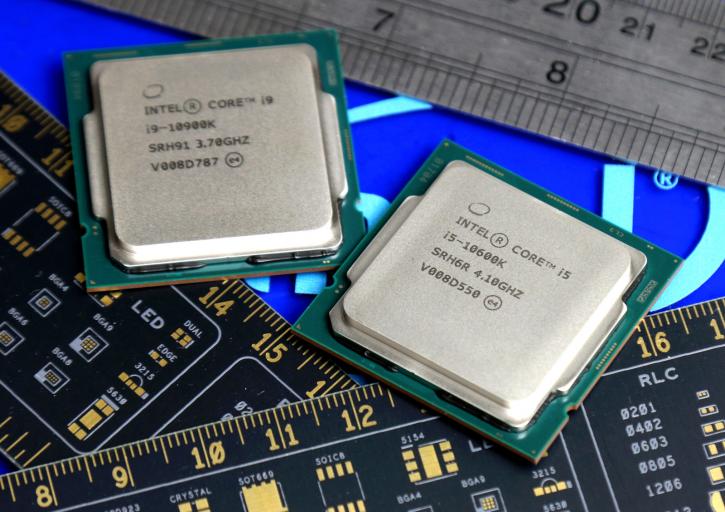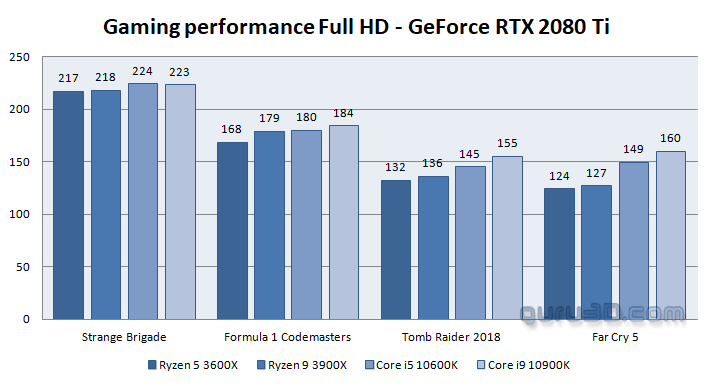Final Words & Conclusion
Final words & conclusion
The Core i5 10600K is definitely what Intel claims their processor series to be, a proper gaming processor, and for 262 USD you can purchase one of these six-core parts. My advice to you would be to be on the lookout for a KF part, if you are installing a dedicated graphics card that is. The 10600 KF based proc has inactive integrated graphics but sells at 237 USD, which makes it a far more interesting deal. Overall the performance is good and, as you have been able to see, the processor is combatting the 3600 and 3600X from AMD. Challenging the AMD Ryzen 3000 series is trivial alright, but each has their own advantages and disadvantages. For example, some level of PCIe Gen 4.0 support for Comet Lake-S would have been preferred, even if it was only x4 PCIe Gen 4.0 to support at CPU level one M.2 unit. It's a bit of a missed opportunity really. The relevancy of PCIe Gen 4.0 M.2/ NVMe SSDs however still is debatable at best, but in the coming year we'll see that host infrastructure advance with much faster NVMe based SSDs and that's where its importance will grow. The processor series requires a new motherboard, a year from now Rocket Lake-S will be released and, yeah, these will be the only two CPU series that will be supported on this infrastructure. I've stated this in a recent discussion here on the website and forums, but considering that you upgrade a motherboard+CPU likely once every four years, we do not see it as incredibly significant for your purchasing decisions. From a processor architecture point of view, little is new in terms of features really. For the money, it, however, is a very competent processor in many respects.
Tweaking
We had a harder time tweaking the 10600K than we did with the 10-core 10900K. An all-core 5000 MHz, however, was pretty much the maximum. We, however, do have to deal with Intel provided samples, not retail. Your luck might be different in that respect. When tweaked, the temperatures remain trivial at best (depending on the choice of cooling), we obviously are going to recommend a proper LCS cooler. At these OC levels you are looking at up-to 1.35V needed on that CPU core (LCS cooling) for a decent tweak, however, and that is the same for AMD, tweaking many-core processors is complicated as you are bound to run into core limitations, heat and power consumption. With processors like these, you really need to wonder if you want to tweak as, really, the best configuration is already there at defaults. We reached roughly 80 Degrees C on the all-core overclock, At that stage, we are closing in at ~285 Watts of power consumption. That's almost 100 Watts over default for maybe 5% extra performance. Ergo my plea to leave the proc at its default configuration.
Gaming performance
As far as gaming goes, the pure raw wins are mostly for Intel, but everything is relative when it comes to gaming as 98% of the time your actual limitation is the GPU, and not CPU. For gaming, GPUs matter more than CPUs. You can measure the effect of CPU performance with games, but only when you steer away from GPU limitation, that's why we use a 1000+ USD graphics card as in the lower resolutions you'll see differences. But with a Radeon RX 5700 or GeForce RTX 2070 these differences would be much closer towards equal for one another. Hey, everything is relative. Let's have a peek here at the chart below. That's a 1920x1080 (Full HD) gaming chart based on the reference GeForce RTX 2080 Ti.
The vast majority of you guys have a far more GPU limited graphics card. So while I am absolutely not evangelizing or recommending 10 cores for gaming these days, the reality absolutely and unequivocally is that you can game pretty darn well with a lower-cost processor as well. However, if you need 144 FPS at Full HD, the symbiosis of a faster processor and GPU can make a difference (at great cost). Currently, I find 8-core processors a sweet spot in relation to gaming, 6-cores for value. And, as you can see, the Core i5 10600K is plenty fast for gaming.
Power consumption
With ten cores you get a 125 Watt TDP processor. But as explained, it is all a little more complicated these days. Intel applies a secondary power stage where the processor is allowed to run twice the TDP value for nearly one minute. While that's a holy grail for added threading performance, it does, however, make energy consumption peak with high-load values. With the system at idle with a GeForce RTX 2080 Ti installed / 16 GB memory / SSD and the Z490 motherboard, it hovers at roughly 70 Watts. That's just fine really, load values are rather significant. When we stressed the processor on a 100% run we reach roughly 180 Watts with this 6-core processor. That's the entire PC with CPU under load, the GPU in idle.
Life span
One thing I do like to address is the life-span of this platform. Comet Lake-S and Rocket-Lake-S will be the only two generations of processor that will work on the LGA1200 series motherboards. That means you will quickly not be able to upgrade based on your motherboard. Next year in 2021, Alder Lake-S has been scheduled, it's mentioned that the pin count once again will change, to socket LGA1700. So while LGA1200 has just been introduced it will last roughly one year before becoming obsolete as an upgrade path.
Conclusion
Processor conclusions are never easy to write up as there are many factors involved as well as multiple pros and cons for each side and brand. Intel certainly gains the most out of the 14nm fabrication node compared to AMD. At 14nm they are able to reach 5.3 GHz (under strict conditions like PL2 and thermals). This brings Intel good peak performance which shows in gaming performance as well as boosting multi-threaded performance. The flip-side of that coin is that once the processor returns to its original PL1 state, that threading performance becomes less good. It is one of the reasons that we recently moved towards test suite software that sometimes runs 10 to 15 minute tests, as that paints a more accurate picture. Tagged in there is IPC, the main factor to consider as IPC x your clock frequency really is the holy grail of it all. So, clock for clock, AMD with ZEN2 has better IPC, and Intel better and longer high clock frequencies, and that's the tradeoff. Each of the architectures will show advantages and disadvantages. Both processor series, however, are really good. Platform wise, Z490 in combination with Comet Lake-S really isn't that different from last-gen and makes this a harder sell to spend money on an upgrade. Imho, Intel really needed PCIe Gen 4.0 here today, on this platform to make a difference. The majority of platform vulnerabilities will have been patched at the hardware level where possible, the performance certainly is there. Intel's biggest trump card is that they came down on prices. Depending on your choice of K or KF model you're going to pay 264 or 237 USD for the 6-core Core i5 10600K(F). That is smack down in the middle of Ryzen 5 3600/3600X territory and, yes, this Intel processor is competitive enough on most fronts performance-wise. For gaming with the fastest graphics card, this Comet Lake generation processor will offer you a bit more performance, though in threaded applications the win is often from AMD. Also, AMD offer PCI Gen 4.0 throughout their ecosystem.
Conclusion though, Gaming wise with the more expensive GPUs, Intel wins. Threading, and overall performance-wise, for that money AMD has a more mature platform with the performance that comes along with it in all segments. But, as is so often the case, platform and brand preference will be important for any potential consumer, there's a camp Intel and a camp AMD. For us, the tweaking experience halted at 5 GHz on all cores. This, however, will be very batch dependant. We do feel that tweaking is becoming a thing of the past as processors are driven more and more to their maximum to squeeze out every drop of performance by the manufacturer. And that's not necessarily a bad thing. See, when you tweak you have to face increased heat and power draw levels as well as dealing with the risk of instability.
At default, the Core i5 1060K remains a competitive product offering proper gaming performance. The price level is okay, my main worry, however, is that the ecosystem is too expensive. Z490 motherboards will start at roughly 250 USD. So I do feel the Core i5 series would be more suited to a B series motherboard TBH, just to keep that cost of ownership under control. As a processor though, this might be one of the more brand competitive models; especially the KF, if you had planned to install a dedicated graphics card, at 237 USD it seems like a good match and, as such, comes recommended.
Handy related downloads:
- Sign up to receive a notification when we publish a new article
- Or go back to Guru3D's front page




